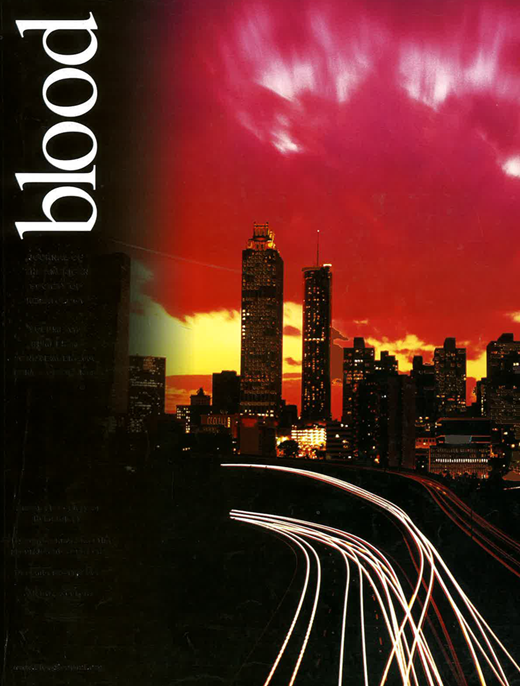Abstract
Approximately 65% of patients with CMP BP exhibit a myeloid phenotype, 30% a lymphoid, and 5% of cases have and undifferentiated or mixed phenotype. Although basophilia is a common feature in both the peripheral blood and the bone marrow during the chronic phase of the disease, transformation to B-BP is a rare occurrence with only anecdotal cases reported. To evaluate the incidence and outcome of B-BP, we reviewed 410 patients with CML who underwent transformation to BP at M.D. Anderson Cancer Center between January 1999 and April 2007. Of them, only 2 (0.5%) cases were diagnosed as having B-BP.
CASE 1: a 19-year-old woman with CML in accelerated phase (AP) failed allogeneic stem cell transplantation (allo-SCT), donor lymphocyte infusion (DLI), autologous SCT, IFN-α, splenectomy, and gemtuzumab. In 10/00 started imatinib therapy at 400 mg/d, achieving a complete hematologic response (CHR) that lasted until 04/03 when she transformed to BP. Gentuzumab was again administered and rendered a CHR, after which she immediately received SCT from her haploidentical mother, resulting in a complete molecular response (CMR) that lasted until 6/05. Therapy with imatinib 800 mg/d was unsuccessful. In 7/05 her white cell count (WBC) was 44x109/L with 25% blasts and 28% basophils. A bone marrow (BM) biopsy showed the presence of 36% blasts with coarse basophilic granules (negative for myeloperoxidase [MPO] and butyrate esterase) and 38% basophils. Flow cytometry demonstrated 65% blastic cells with positive markers of myeloid lineage (CD11c, CD13, CD33) without immaturity markers (CD34, HLA-DR, TDT) B or T lymphoid markers (CD10, CD19, CD20, CD22, CD2, CD3, CD5) or other myeloid markers (CD14, CD15, CD65, MPO). Cytogenetics revealed an isochromosome 17, +8, and t(9;22) in 19/20 metaphases. A b3a2 BCR-ABL1 (p210) transcript with no evidence of mutations within the kinase domain was detected. Given her critical condition the patient was received only supportive care and died shortly thereafter.
CASE 2: a 39-year-old woman was diagnosed with CML in chronic phase (CP) in 12/04. She failed therapy with IFN-α, allo-SCT, DLI, imatinib 800 mg/d, PR1 vaccine, matched unrelated donor SCT, imatinib 800 mg/d in combination with tipifarnib, and nilotinib 600 mg twice daily, after which she progressed to BP. A CBC revealed a WBC of 21x109/L with 29% blasts and 66% basophils. A hypercellular BM biopsy revealed 44% blasts (MPO negative) with large cytoplasmic granules and 45% basophils. Blast exhibited an immunophenotype characterized by positivity of myeloid markers, negativity of MPO, B and T cell markers, and partial positivity of CD117. Karyotypic analysis showed that 16/19 metaphases carried t(9;22), −16, add(17)(p13). Molecular studies detected a e1a2 p190 BCR-ABL1 transcript. Therapy with dasatinib 70 mg twice daily for 16 weeks was ineffective and the patient was referred to hospice care. In conclusion, B-BP is a rare subtype of BP CML that exhibits high resistance to standard chemotherapy, allo-SCT, and targeted BCR-ABL kinase inhibitors.
Author notes
Disclosure: No relevant conflicts of interest to declare.

